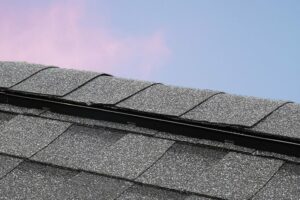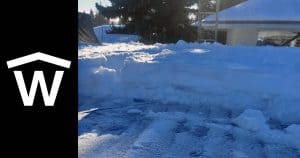Homeowners often don’t look closely at their roof and, in most cases, do not know about their roof and the roofing systems implemented to protect their home.
Usually, most people underestimate the intricacies of a roof and what products and expertise are needed to put together a long-lasting weather-resistant roof.
We will now look at the layers of a roof by looking at a typical, modern shingle roof installation. The example used will replicate standard practices in Calgary, Alberta.
The Layers of a Roof
We will look at each layer, starting from the attics insulation and then from the decking to the shingles exposed to the elements.
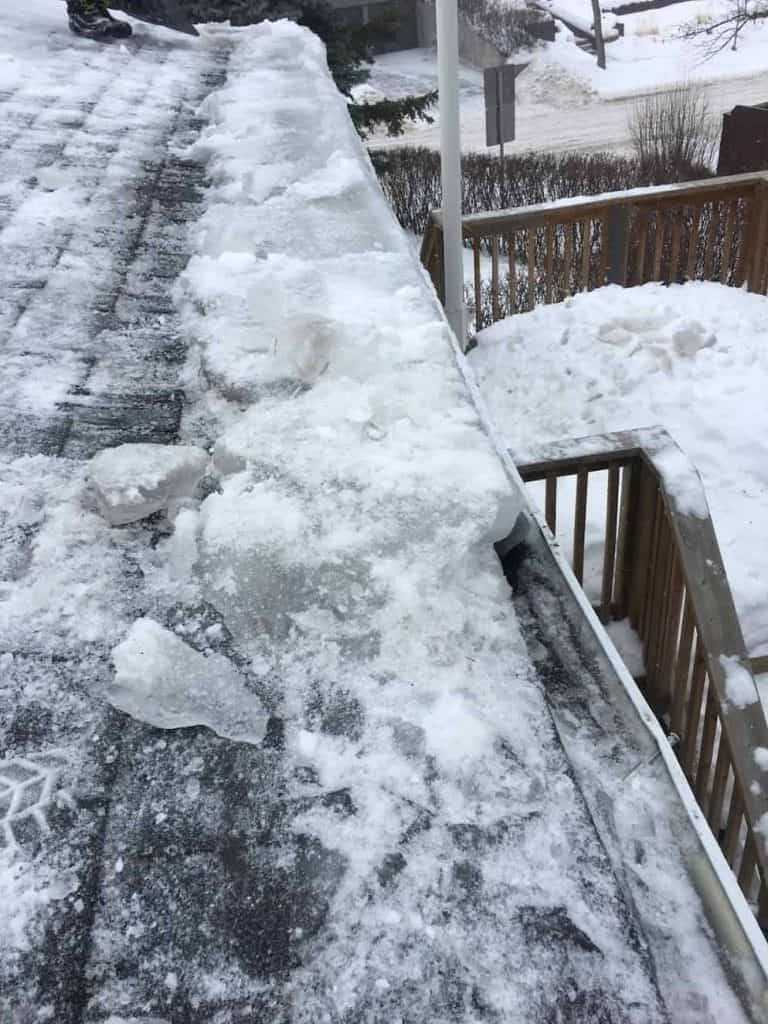
Attic Insulation
Although not a direct layer on your roof, attic insulation is critical to an efficient roofing system. Because of this, we decided to include insulation as an essential layer. Why?
- Managing temperature: Since heat rises, the insulation covering the attic floor becomes crucial to prevent warm air from entering the attic in the summer. But, of course, the reverse is valid during the hot summer days as you keep your home cool. Insulation alone won’t achieve proper temperature management, and that is where adequate Ventilation comes into play. W4SR has touched on this topic in our post about Ventilation in the winter.
- Sound Proofing: Insulation improves not only temperature regulation but also soundproofing—certain products offering exceptional soundproofing beyond ordinary insulation.
- Environmentally Friendly: A by-product of increased temperature control and saving money is the reduced energy required to heat or cool your home. When less energy is needed, you’re not drawing as much power from the grid and thus help reduce the load on the power grid and environment from fossil fuel fuel-powered sources.
- Saving Money: Good attic insulation will increase your R-value and thus keep costs of warming and cooling your home down.
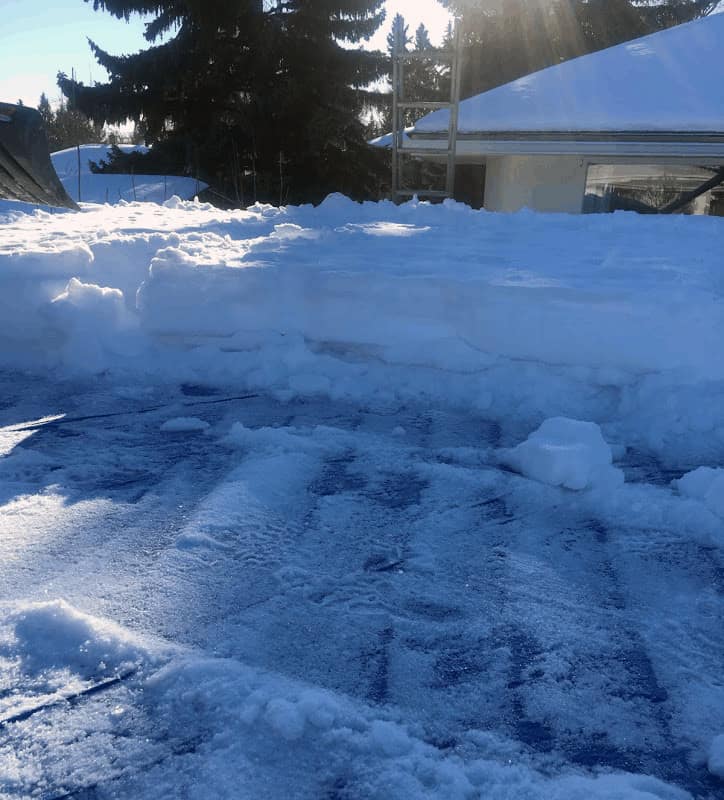
Roofs Framing
When we look at the framing of the home, we also have to consider the overall design. For our example, we will have a classic sloped roof with a vented attic from an atypical light wood-frame home in North America.
The main factor of the frame of the roof is to hold up everything you’re putting on it. Most framed roofing designs allow the roof to withstand a lot of weight; however, this weight can vary and should be considered, especially for heaver roofing products such as slate. Furthermore, remember that we can get heavy snowfall in Alberta, Canada; the additional weight of snow in your region needs to factor into the total required weight for the structure.
Roof Deck (Sheathing)
The roof deck is installed directly on top of the framing. A good roof deck will provide a foundation for the additional layers and help stick the layers together by providing a fastening material (Roofing Nails, for example).
The decking is typically made out of materials like plywood or OBS; however other material types are used in certain instances.
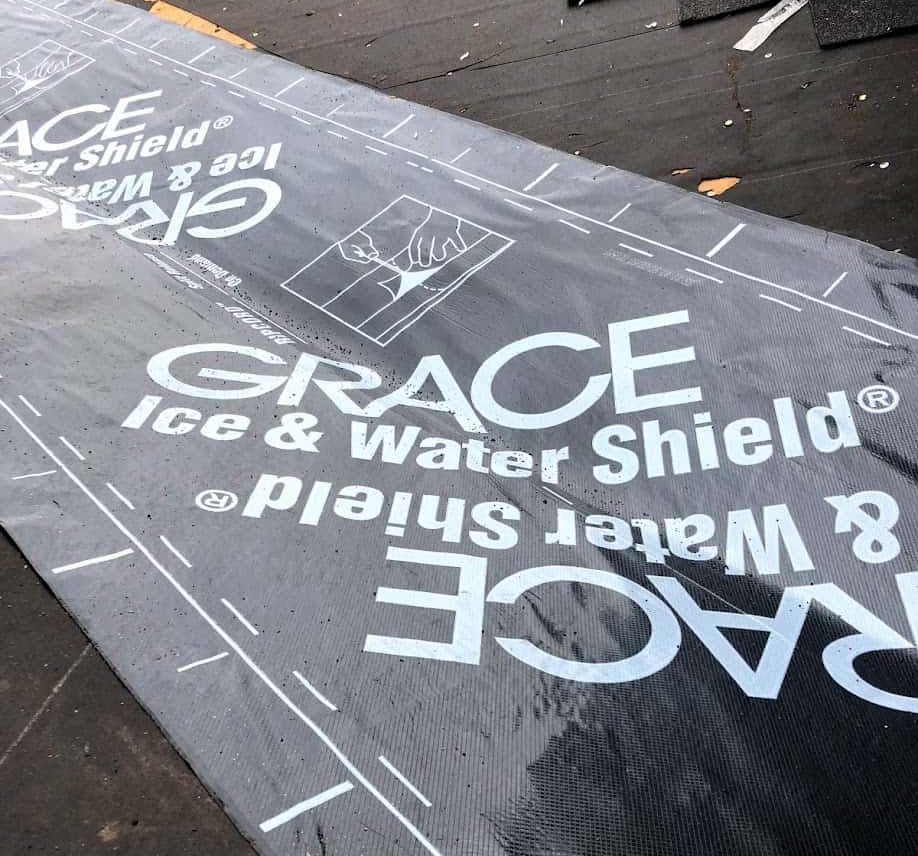
Underlayment Plus Ice and Water Shielding
One critical part of the roofing system that you can’t often see is called underlayment.
Underlayment provides a layer of protection that the shingles on top cant do by themselves. The extra layer helps defend against moisture damage and other inclement weather from penetrating the roofs deck and the rest of your home.
Special underlayment or ice barriers are used in areas such as the home’s valleys, eaves, protrusions and surfaces with low slopes.
Three primary types of underlayment:
- Asphalt-saturated felt
- rubberized asphalt
- non-bitumen synthetic
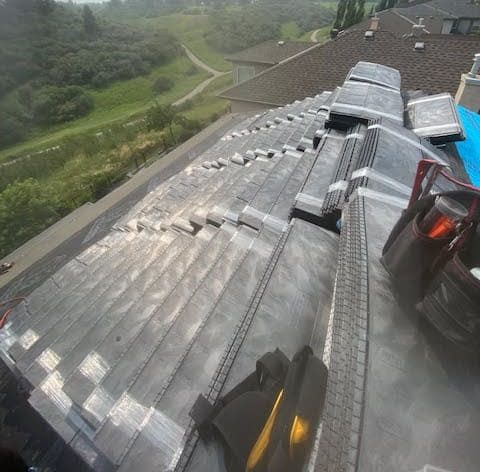
Shingle Starter Strips
Asphalt shingle strip (or modified shingles) placed on the roof’s edge around the rake edges and eave of the roof. This extra layer helps protect the roof’s edges from high winds and lifting shingles where the effect is most common.
Asphalt shingles or other Roofing Materials
The star of the roofing system is the one that gets the most attention, and that being the one layer you can see at the top, Shingles.
Shingles take the brunt of all the forces your roof experiences and are considered an essential part of your roofing system. However, the other layers and parts are often just as important. Also, improperly installed or faulty materials will make your costly shingles useless without the proper layers underneath. An example of not considering the previous layers is when people place shingles over shingles.
Bonus: Parts of your roof
We have just gone over many of the roof layers, but other parts are just as important. They include eavestroughs (gutters), Ventilation, and other weather protection components. To learn more about these parts of your roof and the terminology, check out our post!
